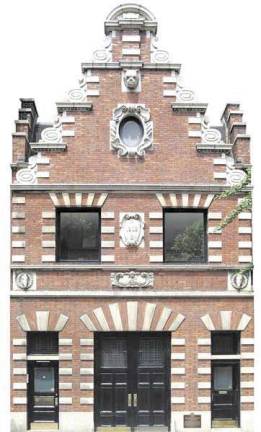Arts That Unites

The UN and Gabarron Foundation bring international art to local attention
The remarkable institution that parented the Universal Declaration of Human Rights 65 years ago and has been campaigning for human rights ever since-the UN, of course-will be turning 70 in 2015. To celebrate, they've mounted a superb exhibit of art culled from their massive archives. Dubbed UNEARTH, the exhibit is currently on view at the Gabarron Foundation's Carriage House Center for the Arts, 149 E. 38th St., through December 27, when it will tour the world before returning to New York for the UN's birthday.
This fascinating exhibit is designed to illustrate the UN's drive for human rights, development, peace and security, and humanitarian assistance. But it also serves to reflect the way art is perceived and produced by an organization representing 193 members from radically different cultures. Through posters created by such artists as Joan Miró and Keith Haring, images from photographers stationed around the world, and a film series accompanied by Q and As with high-ranking UN officials, UNEARTH embodies the fine line-if a line exists at all-between politics and art. It's the brainchild of Chaim Litewski, chief of the UN's TV unit, and the Gabarrón brothers, whose Carriage House Center for the Arts provides a gorgeous brownstone setting dedicated to international cultural exchange.
UNEARTH commences on the brownstone's first floor with a historical roar: A sketch of a proposed UN structure drawn on a napkin by FDR during his meeting with Stalin and Churchill in Teheran. This segues into a fine collection of 40 photographs culled from an 800,000-image archive. Highlights include a sizzling 2011 shot of young men grasping their way toward a border in Libya by contract photographer Alexis Duclos, and John Isaac's image of Vietnamese refugees scrambling over makeshift boats in Kowloon while Hong Kong skyscrapers beckon, hostile, metallic, in the background. On the second floor, 34 posters ranging from historic to supercontemporary chronicle the UN's self-image as it changes over time.
UNEARTH can be considered both an art exhibit and a self-portrait. Discussions that are so important now-sustainable development; empowering women; self-determination-originated in the UN, a fact reflected in the iconography of UNEARTH. But the iconography also suggests an institution that is highly conscious of the fact that it serves 193 bosses. UNEARTH, then, does nothing short of representing the fascinating interplay between doing and not doing-between making the world a better place and simply letting people live as they would-that might well represent the ultimate human challenge.